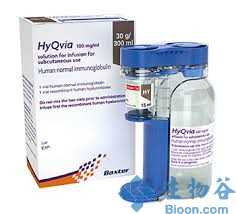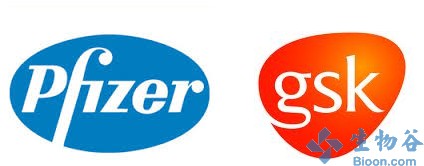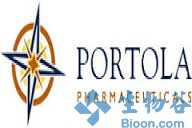百特向FDA提交HyQvia修正版BLA
2013-12-04 tomato 生物谷
百特(Baxter)12月2日宣布,已向FDA提交了有关HyQvia的一份修订版生物制品许可申请(BLA),以便重新启动关于HyQvia治疗原发性免疫缺陷(primary immunodeficiency syndromes,PI)成人患者监管申请的审查程序。 HyQvia由人正常免疫球蛋白(IGSC,10%)和重组人透明质酸酶(hyaluronidase)组成,透明质酸酶有利于IGSC的分
百特(Baxter)12月2日宣布,已向FDA提交了有关HyQvia的一份修订版生物制品许可申请(BLA),以便重新启动关于HyQvia治疗原发性免疫缺陷(primary immunodeficiency syndromes,PI)成人患者监管申请的审查程序。
HyQvia由人正常免疫球蛋白(IGSC,10%)和重组人透明质酸酶(hyaluronidase)组成,透明质酸酶有利于IGSC的分散和吸收。
应FDA的要求,百特和Halozyme于2012年提交了额外的临床前数据。
原有BLA的提交,基于一项前瞻性、开放标签、非对照、多中心III期临床试验的数据。该项研究评估了HyQvia用于预防急性严重细菌感染的安全性和有效性,同时与静脉给药型免疫球蛋白的药代动力学参数进行了比较。该项研究的目的是在单一的皮下注射位点注入一剂3或4周剂量的HyQvia。该项研究中,急性严重细菌感染率为0.025/人/年,低于所要求的疗效阈值1.0/人/年。对HyQvia的耐受性评估数据表明,最常见的不良反应为输注部位反应、头痛、疲劳、发热。
HyQvia已于2013年5月获欧盟批准,作为一种替代疗法,用于原发性免疫缺陷综合征(primary immunodeficiency syndromes)及伴有继发性低丙种球蛋白血症和反复感染的骨髓瘤或慢性淋巴细胞白血病成人患者(≥18岁)的治疗。
百特已于2013年第二季度在选定的一些国家推出HyQvia,同时计划于2014年在其他欧盟国家上市销售。
英文原文:Baxter International Inc. : Baxter Submits Amended BLA to U.S. FDA for HyQvia for Primary Immunodeficiency
Baxter International Inc. (NYSE:BAX) and Halozyme Therapeutics, Inc. (NASDAQ:HALO) announced today that Baxter has completed submission of an amended biologics license application (BLA) to the United States Food and Drug Administration (FDA) to re-initiate the review process for approval of HyQvia [Immune Globulin Infusion 10% (human) with Recombinant Human Hyaluronidase] facilitated subcutaneous infusion for the treatment of adult patients with primary immunodeficiency (PI).
HyQvia is a combination of human immune globulin (IG) and recombinant human hyaluronidase. Baxter and Halozyme submitted additional preclinical data that was requested from the FDA in 2012, and expect a six-month review period.
''We believe that if approved, HyQvia may become a valuable option for patients with immune deficiency as it allows for the delivery of a full dose of immunoglobulin often in a single site every three to four weeks, in the comfort of a patient's home,'' said Ludwig Hantson, Ph.D., president of Baxter's BioScience business. ''As a long-standing leader in the IG market, we are committed to continually developing new treatment options like HyQvia that have the potential to make a meaningful difference in the way patients are treated.''
The original BLA submission for HyQvia was based on results from a Phase III, prospective, open-label, non-controlled multi-center clinical trial, which evaluated the safety and effectiveness of HyQvia in the prevention of acute serious bacterial infections, rate of adverse reactions and the pharmacokinetic parameters compared to immunoglobulin administered intravenously. In the tolerability assessment of HyQvia, the most frequently reported adverse reactions for patients who received HyQvia were local infusion site reactions (such as pain or discomfort, redness, swelling, and itching) and headache, nausea, fatigue and fever.
HyQvia was approved and launched in a number of European countries in the second half of 2013.
About HyQvia
HyQvia is a product consisting of human normal immunoglobulin (IG 10%) and recombinant human hyaluronidase (licensed from Halozyme Therapeutics). The IG provides the therapeutic effect and the recombinant human hyaluronidase facilitates the dispersion and absorption of the IG administered subcutaneously, increasing its bioavailability. The IG is a 10% solution that is prepared from human plasma consisting of at least 98% IgG, which contains a broad spectrum of antibodies.
HyQvia is indicated in Europe as replacement therapy in adults (? 18 years) with primary immunodeficiency syndromes and in myeloma or chronic lymphocytic leukaemia (CLL) with severe secondary hypogammaglobulinaemia and recurrent infections.
Important Risk Information
HyQvia should not be used by patients with a hypersensitivity to human immunoglobulins, especially in very rare cases of IgA deficiency when the patient has antibodies against IgA. HyQvia should not be used by patients with a systemic hypersensitivity to hyaluronidase or recombinant human hyaluronidase. HyQvia should not be used by patients with a hypersensitivity to any of the excipients, including glycine.
HyQvia must not be given intravenously.
HyQvia should not be used by women who are pregnant, or are planning to become pregnant, or are breast-feeding.
Patients should be closely monitored and carefully observed for any adverse reactions throughout the infusion period, particularly patients starting with HyQvia treatment. In case of adverse reaction, either the rate of administration must be reduced or the infusion stopped. The treatment required depends on the nature and severity of the adverse reaction. In case of shock, standard medical treatment for shock should be implemented.
Thromboembolic events (e.g. myocardial infarction, cerebral vascular accident, deep vein thrombosis, and pulmonary embolism), renal dysfunction/failure, aseptic meningitis syndrome, and hemolysis have been observed with IG 10% administered intravenously and cannot be excluded with use of HyQvia. Thrombotic events and haemolysis have also been reported in association with the subcutaneous administration of immunoglobulin products.
Human normal immunoglobulin and human serum albumin (stabilizer of the recombinant human hyaluronidase) are produced from human plasma and may carry a risk of transmitting infectious agents.
About Immunodeficiency Disorders
Primary immunodeficiencies (PI) are a group of more than 175 disorders in which part of the body's immune system is missing or does not function properly. Normally, the immune system protects the body from pathogenic microorganisms like bacteria, viruses, and fungi, which can cause infectious diseases. When any part of a person's immune system is absent or dysfunctional, they are more likely to become infected and may take longer to recover from infections. When a defect in the immune system is inherited, it is called primary immune deficiency. It is estimated that as many as six million children and adults are affected by PI worldwide.
本网站所有内容来源注明为“梅斯医学”或“MedSci原创”的文字、图片和音视频资料,版权均属于梅斯医学所有。非经授权,任何媒体、网站或个人不得转载,授权转载时须注明来源为“梅斯医学”。其它来源的文章系转载文章,或“梅斯号”自媒体发布的文章,仅系出于传递更多信息之目的,本站仅负责审核内容合规,其内容不代表本站立场,本站不负责内容的准确性和版权。如果存在侵权、或不希望被转载的媒体或个人可与我们联系,我们将立即进行删除处理。
在此留言













